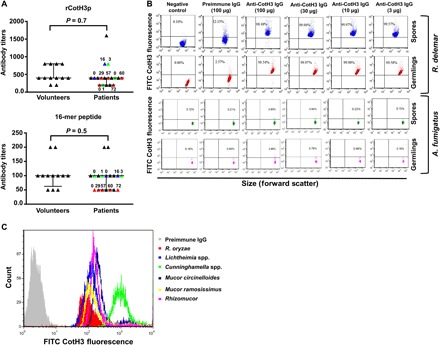Fig. 1. CotH antibody titers in mucormycosis patients are not different from those in healthy subjects, while rabbit anti-CotH3 polyclonal antibodies specifically bind to Mucorales.

(A) ELISA plates coated with rCotH3 from Escherichia coli or the 16-mer peptide showing low and similar anti-CotH3 antibody titers in sera collected from mucormycosis patients (11 total) or healthy volunteers (12 total). Colored symbols indicate sera collected from the same patient at different days (numbers) following diagnosis (day 0). (B) Flow cytometry analysis revealed that different concentrations of anti-CotH3 polyclonal antibody (and not the preimmune IgG antibody) bound both R. delemar spores and germlings with high consistency but not with A. fumigatus. The different doses of antibodies ranged from the highest (100 μg/ml) to the lowest (3 μg/ml). (C) The polyclonal antibodies also bound to a number of other fungi belonging to the order Mucorales.
